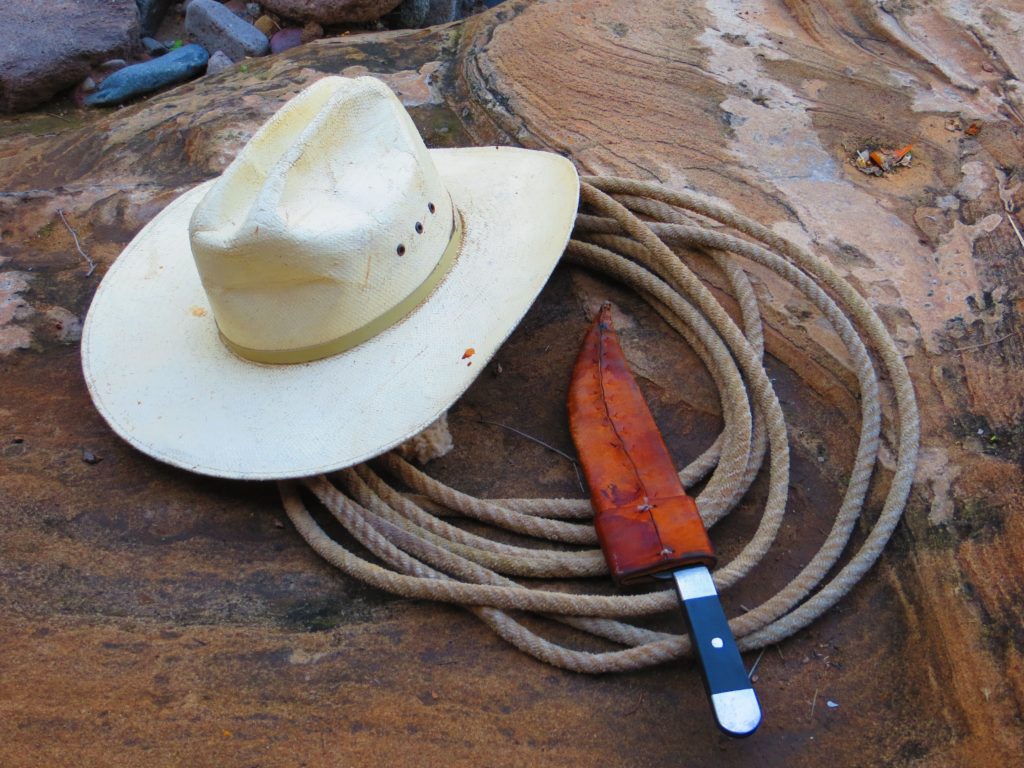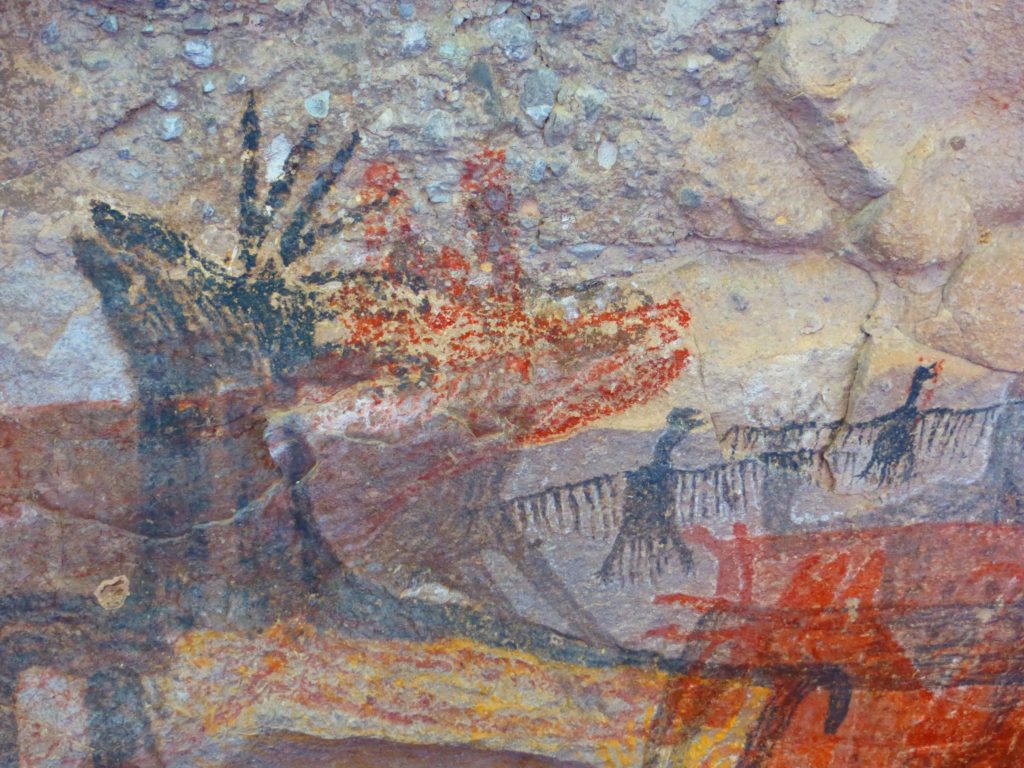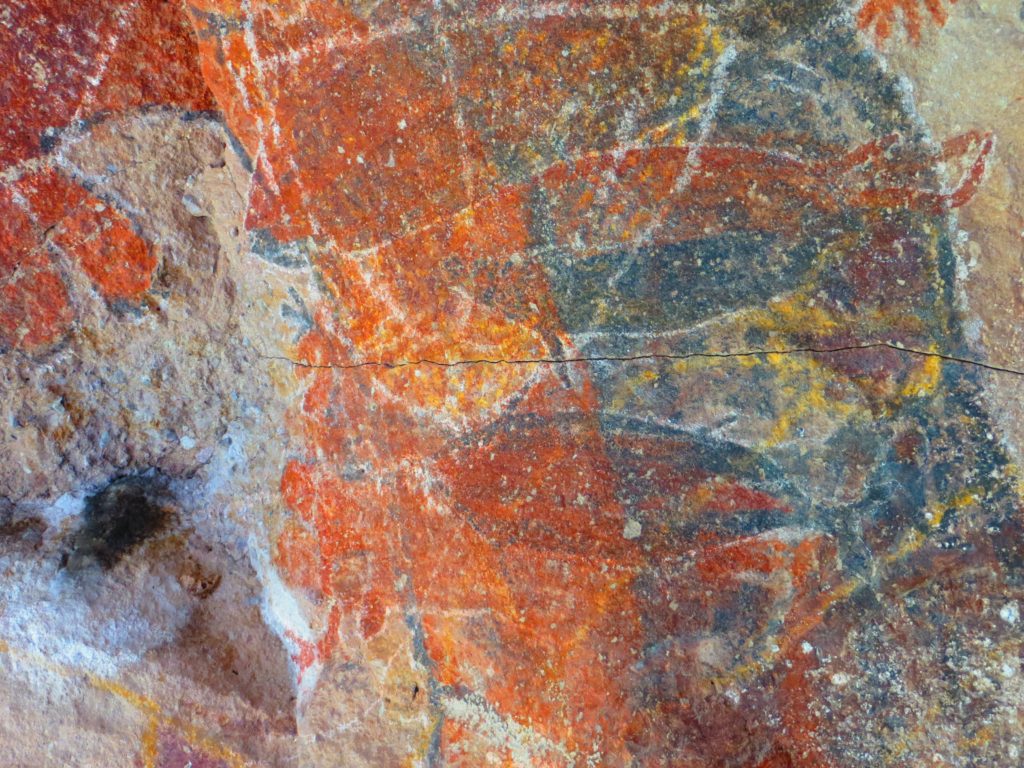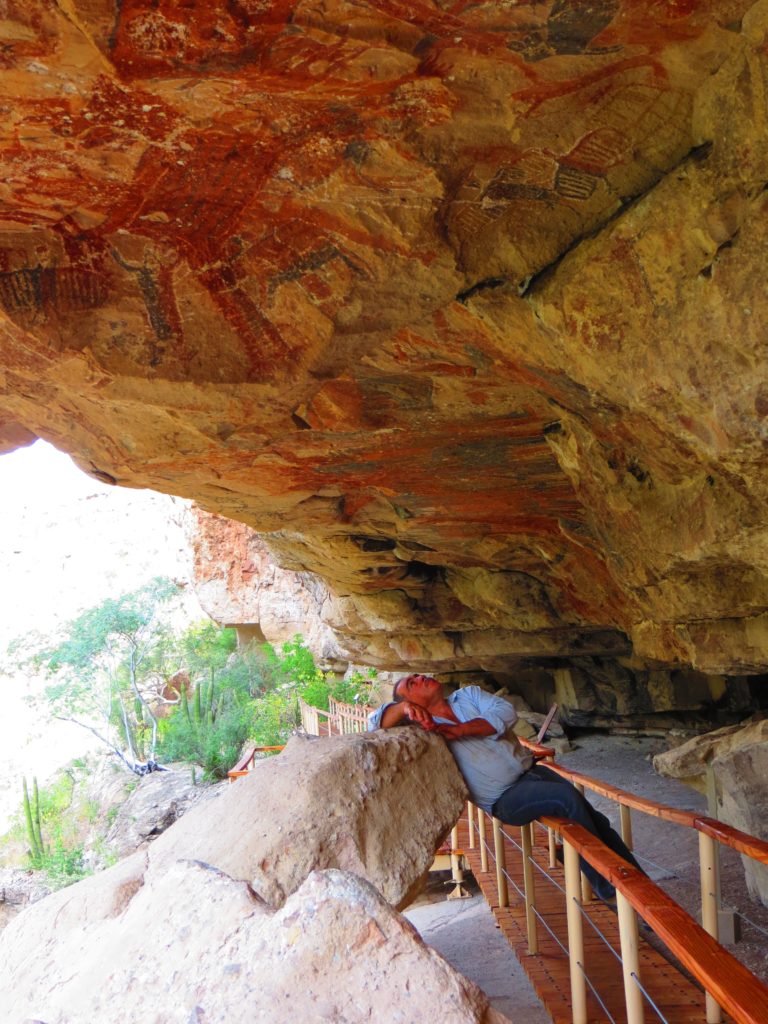Deep in the canyons of Baja’s Sierra de San Francisco lies a world-renowned treasure waiting to be discovered. Join us for a hop, skip and a scramble exploring a crowning jewel among Baja’s cave paintings – Cueva Pintada.
Disclosure: This post contains affiliate links. If you buy something from one of our affiliates, we receive a small commission at no extra charge to you. Thanks for helping to keep our blog up and running!

Table of Contents
What and where is Cueva Pintada?
Located at the center of the Mexico’s Baja California peninsula lies the El Vizcaino Biosphere Reserve – the largest wildlife refuge in Latin America. It protects coastal and marine ecosystems through desert habitats to mountainous regions. The reserve links the Pacific Ocean to the Gulf of California (also known as the Sea of Cortez).
Deep in the heart of this reserve is one of the most outstanding collections of rock paintings in the world. Collectively known as the Great Mural paintings, there are hundreds of sites.
For a period of close to 1400 years – until 1300 CE – the rugged valleys of the Sierra de San Francisco range were home to a culture that expressed the relationship between humans and their environment through art.
The largest of all the Great Mural painting sites is Cueva Pintada (Painted Cave). This great mural is one of the most heavily painted in the most painted part of the canyon.
On our way to the Painted Cave
Scrambling down small cliffs and hopping over boulders on our way to visit Cueva Pintada in Baja’s Sierra Nevada, our guide – Mauricio Zuniga Arce – navigates the desert canyon nimbly in smooth-soled cowboy boots. He carries nothing more than a water canteen, a machete, and a lariat.

Noteworthy: It is necessary to obtain a permit from the National Institute of Anthropology and History (INAH). Visitors must also hire an authorized guide to take you on a tour to visit Cueva Pintada. Our guide carried little during the day because it was our responsibility, on a self-arranged trip, to provide food. Good food – and lots of it – makes for a happy guide!
Packs on backs (loaded with food), hiking shoes on feet, we scramble to keep up with Mauricio. Travel is at times tricky on the rugged slopes out of the verdant, palm tree lined, Arroyo de San Pablo. We have one thought on our minds – make it to see the paintings in one piece!
Exploring Cueva Pintada
The painted cave is just up the hill. When we finally reach the site, the reality of seeing it person blows the mind.
This shallow cave stretches for nearly 500 feet (152 m) in length. Almost every paintable surface is covered with hundreds, perhap even thousands, of images – handprints, starbursts, human figures, deer, rabbits, and vultures – one often superimposed on top of another. They are precisely outlined and often in multiple colors.

One of the largest figures in the cave is that of what is thought to be possibly a whale (ballena) or sea lion (león marino). There are also numerous images of fish (pescado). The ocean is more than 100 miles (over 160 km) away if you were to follow the drainage to the sea.

Appreciating the rock art
We sit up and soak up the art. Then we lean back and view it at a different angle. Finally we look up. We take plenty of time to admire the visual feast of art in front and above us.
The paintings of Cueva Pintada are remarkably preserved. This is due to a variety factors. It includes things such as the difficulty in reaching the site, the dry climate, and the durability of the rock itself. This incredible mural is one of the key reasons that the area was designated a UNESCO World Heritage Site in 1993.
According to the designation, “the rock art of Sierra de San Francisco region of Baja California is one of the most outstanding concentrations of prehistoric art in the world and a dramatic example of the highest manifestations of this human cultural expression.”
What the images really mean – and why they were painted in these locations – is up for interpretation. For the layperson, the cacophony of the art is almost overwhelming to process at first glance.
In his book, The Cave Paintings of Baja California, Harry Crosby suggests that that act of painting was more valuable than preserving the visibility of each individual image.
We agree with Harry.
The muddled artwork we see today is as wildly confusing as it is thought-provokingly perfect.
And if you haven’t had enough of painted caves, be sure to check out Cueva de las Flechas (Cave of the Arrows) and 5 Reasons to Experience Baja Cave Painting Tours.


Leave a Reply